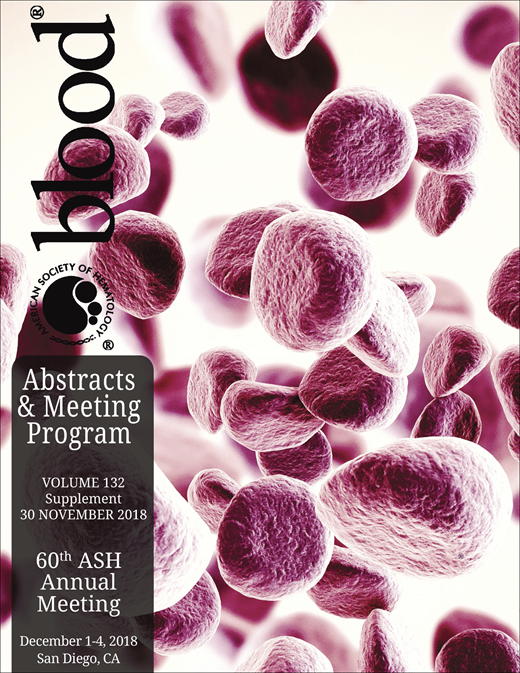Abstract
Introduction: Follicular lymphoma (FL) is graded as 1, 2, 3A and 3B based on the number of centroblast cells. Although FL grade 3A is considered as a low-grade lymphoma, its prognostic significance compared to FL grade 1-2 remains controversial, especially for particular morphological variants with large cleaved cells or blastoid features, which are not recognized as a specific entity.
Method: In order to clarify these points, FL grade 3 patients (pts) were selected from a large series of 2247 untreated pts enrolled in two LYSA trials: PRIMA (evaluating rituximab (R) maintenance after R-chemotherapy) and RELEVANCE (evaluating lenalidomide plus rituximab (R2) followed by R2 maintenance versus R-chemotherapy). FL3B pts were excluded from both trials. Sufficient material and clinical informations were available for 1757 out of 2247 pts. Among them, 161 pts including 88 of 950 PRIMA pts (9.2%) and 73 of 734 RELEVANCE pts (9.2%) were classified as FL3A. Among these FL3A cases, a panel of 7 expert hematopathologists identified 48 cases (2.7% of 1757 analyzed FL cases) which contained a significant component of large cleaved cells or medium-sized blastoid cells but did not meet grade 3B criteria. These cases were called FL3 "unclassified" (FL3U) as compared to classical FL3A (cFL3A) cases. We then analyzed the correlations between the histologic grade, phenotypic/cytogenetic features and clinical outcome.
Results: FL3U were characterized by: i) proliferation of large cleaved tumor cells with moderately coarse to fine chromatin and absent or inconspicuous nucleoli (n=30) or predominance of medium-sized blastoid tumor cells with fine chromatin and small nucleoli (n=18) and ii) expression of CD20 and at least one germinal center marker. Mean of MYC and MUM1 protein expression in FL3U were 18% [from 3 to 25%] and 14.8% [3-35%], respectively, with no significant difference with cFL3A. Ki67 expression was higher in FL3U than in cFL3A (55.6% [20-90%] vs 41.3% [2-85%]) (p=0.008). Expression of p53 protein was slightly higher in FL3U than in cFL3A (37% [10-80%] vs 34.9% [8-90%] (p=0.052). FL3U had a tendency to harbor less frequent BCL2 rearrangements than cFL3A (74% vs 95%) (p=0.0620), whereas BCL6 rearrangements were significantly higher in FL3U than in cFL3A (29% vs 0%) (p=0.0034). The frequency of MYC rearrangements and 1p36 deletions in FL3U (9.6% and 6% of FL3Us, respectively) showed no significant difference with cFL3A. No detectable alteration in IRF4 locus was seen in both FL3U and cFL3A. The median age of FL3U pts was 58 years with 1:1 ratio of males to females and most pts had advanced stage at diagnosis with frequent marrow infiltration and intermediate to high FLIPI score. Outcome of pts with FL3U was not significantly different to that of cFL3A pts in Cox multivariate analyses. After a median follow-up of 117 months for PRIMA and 38 months for RELEVANCE, 89.6% of FL3U and 85.2% of cFL3A were alive with no significant difference between the 2 groups (p=0.4507). There was also no statistical difference in progression free survival (PFS) between the 2 groups (p= 0.1479). Similarly, we did not found any statistical difference in PFS between FL3U and FL1-2 and between FL1-2 and cFL3A (p=0.9210 and p=0.5375, respectively); as well as in overall survival (OS) (p=0.6223 and p=0.0960, respectively). Finally, the outcome of the whole group of FL3A pts including cFL3A and FL3U variants was similar to FL1-2 pts.
Conclusion: FL grade 3A exhibits pathological and genomic diversity due to FL3U variants characterized by higher amounts of medium-sized blastoid or large cleaved cells, higher Ki67 proliferative index and p53 expression, together with increased frequency of cytogenetic BCL6 alterations and lower frequency of BCL2 rearrangements. However, in both PRIMA and RELEVANCE trials, FL3U pts showed no significant difference in terms of PFS or OS as compared to both FL1-2 and cFL3A pts. These results indicate that FL3A represents a spectrum of proliferations with variable maturity, proliferative activity and genomic alterations that may be intermediate points of progression toward FL3B/transformation. They suggest that the distinction between cFL3A and FL3U variant, as well as between FL1-2 and FL3A may not have any prognostic significance using modern rituximab- or lenalidomide-based treatments, although this has to be confirmed with different drug combinations.
Cartron:Gilead Sciences: Honoraria; Celgene: Consultancy, Honoraria; Roche: Consultancy, Honoraria; Sanofi: Honoraria; Janssen: Honoraria. Morschhauser:Epizyme: Consultancy; Janssen: Other: Scientific Lectures; Celgene: Consultancy, Membership on an entity's Board of Directors or advisory committees; Gilead: Consultancy, Membership on an entity's Board of Directors or advisory committees; Roche: Membership on an entity's Board of Directors or advisory committees; BMS: Membership on an entity's Board of Directors or advisory committees. Salles:Acerta: Honoraria; Janssen: Honoraria, Other: Advisory Board; Epizyme: Honoraria; Pfizer: Honoraria; Amgen: Honoraria; Abbvie: Honoraria; Novartis: Consultancy, Honoraria; Servier: Honoraria, Other: Advisory Board; F. Hoffmann-La Roche Ltd: Consultancy, Honoraria, Research Funding; BMS: Honoraria, Other: Advisory Board; Morphosys: Honoraria; Gilead: Honoraria, Other: Advisory Board; Celgene: Honoraria, Other: Advisory Board, Research Funding; Merck: Honoraria; Takeda: Honoraria; Servier: Honoraria. Xerri:Janssen: Other: Travel.
Author notes
Asterisk with author names denotes non-ASH members.

